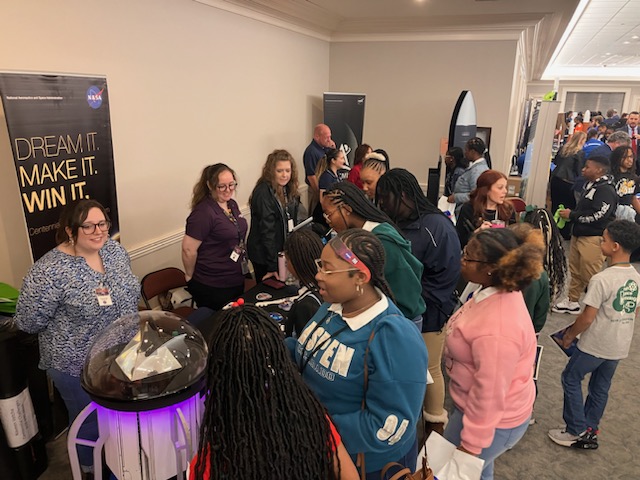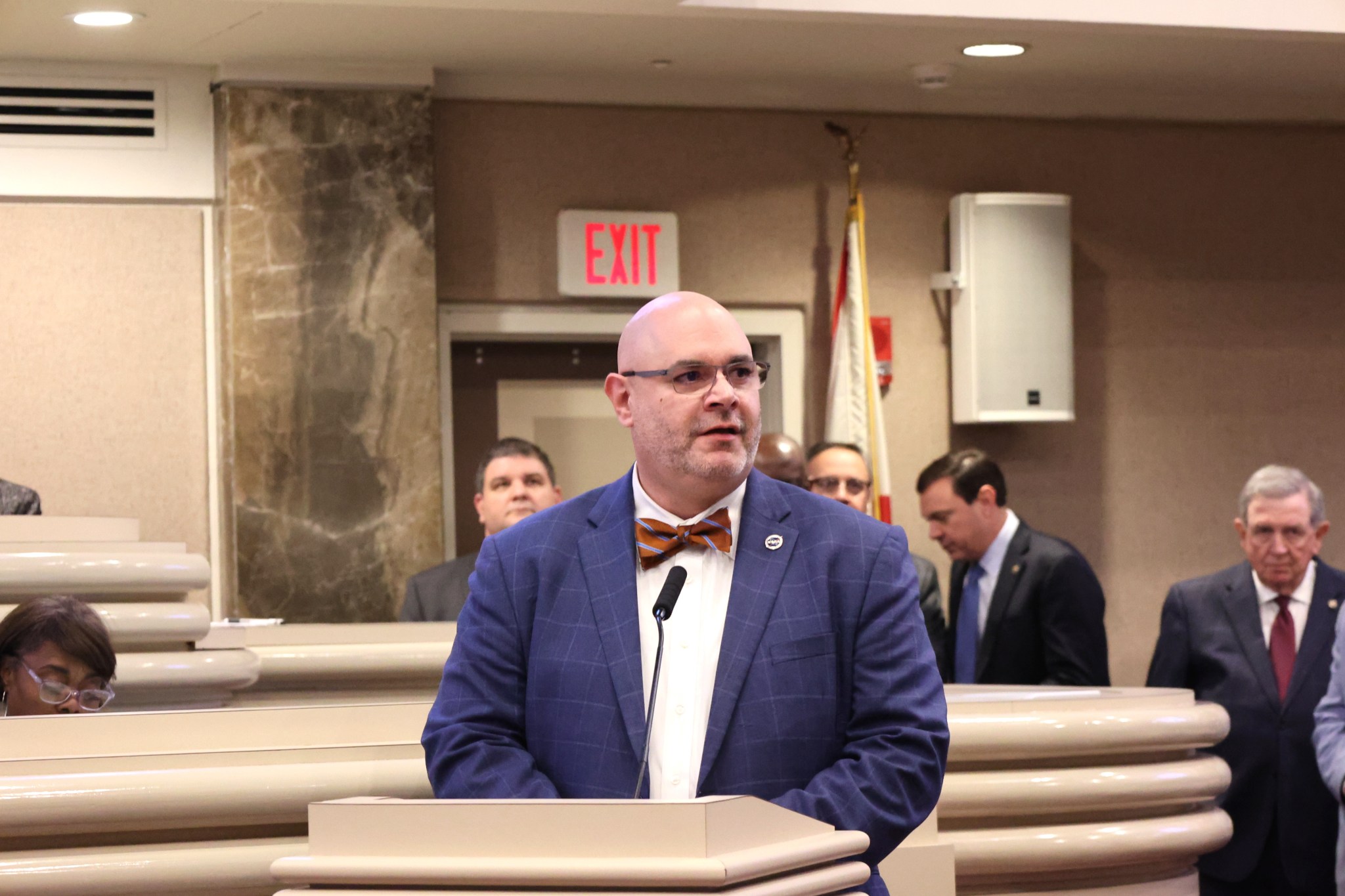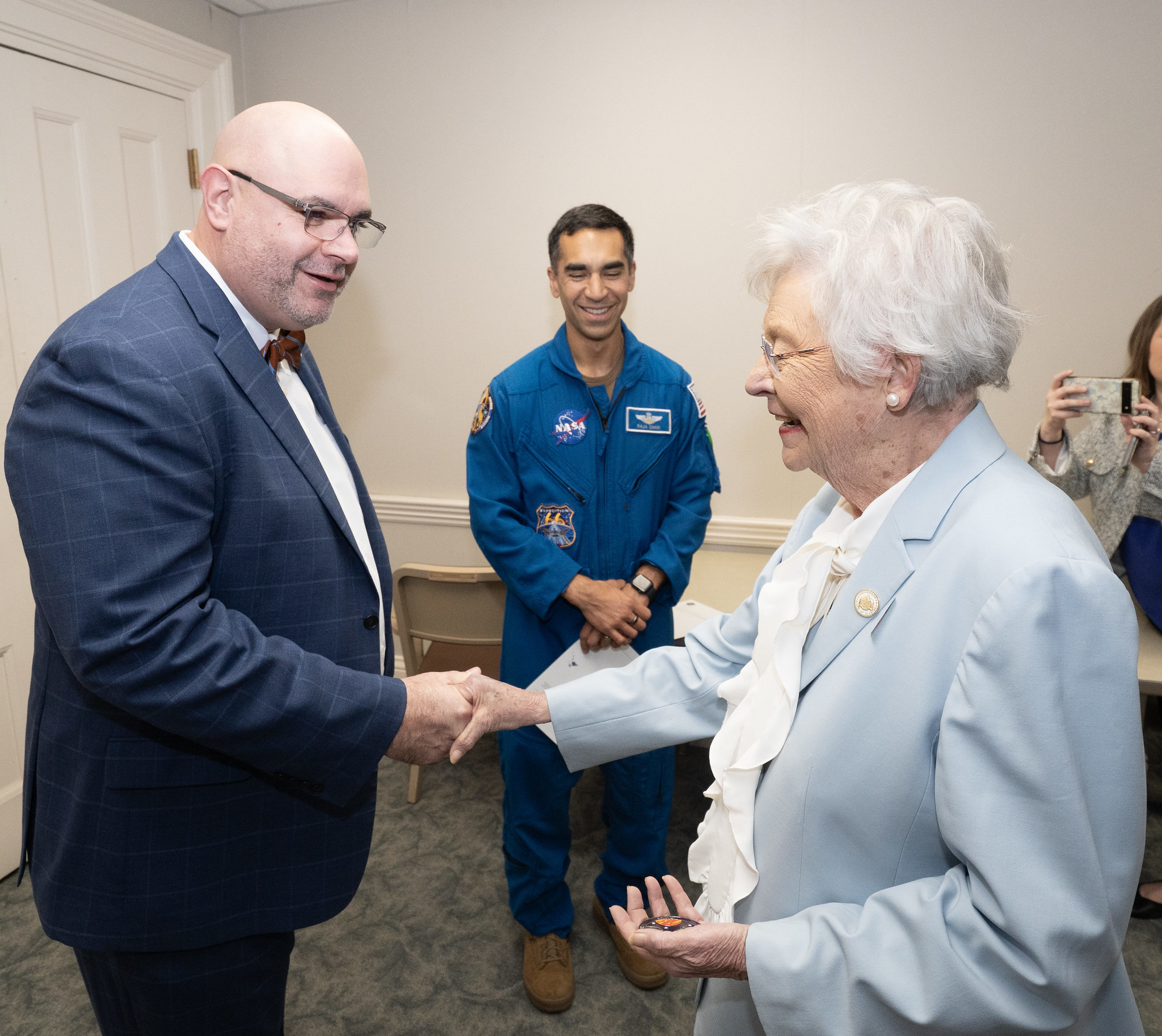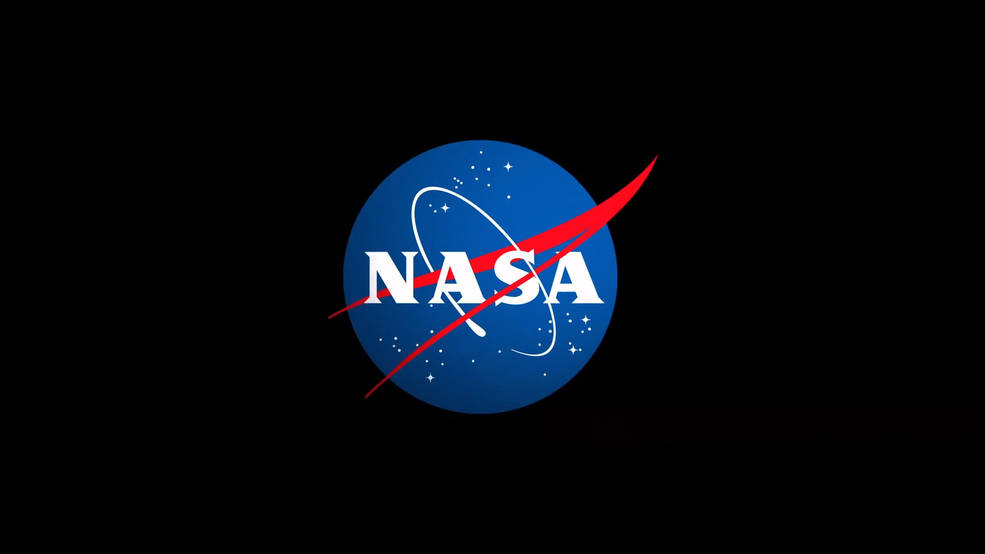
Marshall Celebrates Alabama Space Day in Montgomery
By Jessica Barnett
Team members from NASA's Marshall Space Flight Center joined Montgomery-area students, the U.S. Space & Rocket Center, NASA's aerospace partners, and elected officials in celebrating the aerospace industry's impact in Alabama on March 5.
This year's event kicked off at the state Capitol in Montgomery with a proclamation from Alabama Gov. Kay Ivey declaring March 5 as Alabama Space Day. Students from the Montgomery area were then invited to take part in various STEM (science, technology, engineering, and mathematics) activities, chat with an astronaut, hear what it takes to become a NASA intern or work at Marshall, and check out exhibits highlighting NASA's many programs, including the Space Launch System, Human Landing System, and Centennial Challenges.

NASA astronaut Raja Chari attended the event and spoke to students about his experience serving as flight engineer of Expedition 66 and 67 aboard the International Space Station for 177 days.
Ivey said she felt honored to host the annual event, which aims to highlight Alabama's contributions to space exploration as well as encourage the next generation of scientists and engineers by pursuing degrees and careers in aerospace.

"We are blessed to have such a world-class space and technology presence in our state," Ivey said. "Alabama is very proud of its historic contributions to the American space program, which go back well over 60 years."
Marshall Center Director Joseph Pelfrey echoed the sentiment, calling it "a great day to celebrate space in Alabama."
"Alabama Space Day was a huge success, thanks to the workforce at Marshall, as well as our aerospace partners and sponsors," Pelfrey said. "We truly appreciate the bipartisan support we receive across the state and enjoy highlighting these partnerships through events like this. I especially valued speaking on panels today with my colleagues and engaging with local high school and college students, who will be the first generation to travel to Mars."

Barnett, a Media Fusion employee, supports the Marshall Office of Communications.
President's NASA Fiscal Year 2025 Funding Supports US Space, Climate Leadership
The Biden-Harris Administration on March 11 released the President's Budget for Fiscal Year 2025, which includes funding to invest in America and the American people and will allow NASA to continue advancing our understanding of Earth and space while inspiring the world through discovery.
"As history has proven, as the present has shown, and as the future will continue to demonstrate, an investment in NASA is an investment in America for the benefit of humanity," said NASA Administrator Bill Nelson. "President Biden's budget will fund our nation's abilities and leadership for the future of space exploration, scientific discovery, cutting-edge technology, climate data, the next generation of aeronautics, and inspiring our future leaders - the Artemis Generation."

The budget allows NASA to launch the Artemis II mission, which will send astronauts around the Moon for the first time in more than 50 years, research Earth's changing climate, grow commercial markets to serve America's interests in space, and inspire the Artemis Generation of science, technology, engineering, and math professionals.
"This budget shows NASA's value in contributing to the global leadership of the United States," said Nelson. "Every dollar supports our ability to continue exploring new cosmic shores and making the impossible possible, all while creating competitive and good-paying jobs in all 50 states."
At NASA, the budget request would:
- Invest in the U.S.-led Artemis campaign of lunar exploration: The budget includes $7.8 billion for the Artemis campaign, which will bring astronauts - including the first woman, first person of color, and first international astronaut - to the lunar surface starting this decade as part of a long-term journey of science and exploration.
- Enhance climate science and information: The budget invests $2.4 billion in the Earth science program for missions and activities that advance Earth systems science and increase access to information to mitigate natural hazards, support climate action, and manage natural resources.
- Advance U.S. space industry technology development: The budget provides $1.2 billion for NASA's space technology portfolio to foster innovative technology research and development to meet the needs of NASA, support the expanding U.S. space industry, which is creating a growing number of good jobs, and keep America ahead of competitors at the forefront of space innovation.
- Support highly efficient and greener commercial airliners: The budget invests $966 million in NASA's aeronautics program, which will develop hybrid-electric jet engines, lightweight aircraft structures, and a major new flight demonstrator to pave the way for new commercial airliners that would be cheaper to operate and produce less pollution.
- Continue the transition to commercial space stations:The budget funds continued operation of the International Space Station, a vehicle to safely de-orbit the space station after it is retired in 2030, and the commercial space stations that NASA will use as soon as they become available.
- Increase STEM opportunities at minority-serving institutions: The budget provides $46 million to the Minority University Research and Education Project, to increase competitive awards to Historically Black Colleges and Universities, tribal colleges and universities, and other minority-serving institutions, and recruit and retain underrepresented and underserved students in STEM fields.






